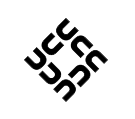This page is to help with onboarding wheel members and ensuring they are getting exposed to the inner workings of UCC, with the intent of exposing those members to services/tools/equipment that they may not have heard of before joining wheel.
It is primarily a list of things that a wheel master mentor should go through with their padawan so they know the things exist, in order to give them a running head start of stuff they can do. It is a recommendation only, and is not intended to be a test or 100% comprehensive, but it is hoped that a mentor will be proactive about the teaching. Prior to going through this, the new wheel member should have read and completed the steps in the WelcomeToWheel document.
- Cisco IOS basics. Logging in to the switch, viewing and editing settings (for example check a port name, enable/disable a port)
Proxmox basics. Log in and ensure the new wheel member gets administrator privileges. Run through machine creation and maintenance procedures.
Exploration of gitlab and the UCC projects therein. Take special note of https://gitlab.ucc.asn.au/UCC/tech-todo-list/-/issues/
- Create and destroy a mysql database on mussel
- Create and destroy a postgres database on mussel
Create a wiki username and ensure WikiName style username is used. Edit the ChangeLog
Check out Machines, ensure everything on that page is understood, and update anything that needs updating.
Check out the MissionControl page to get a feel for some our key systems for monitoring and administration.
- Edit an item in the snack config
- Look over the firewall file and its structure. Go through how to open a port and test it is open. Take note of the source control on the firewall and how to view/checkin changes
- Detailed tour of the machine room, how to check statuses of machines, how to use the KVM
- Connect to a few remote management consoles on the servers and go over the features thereof
- Check the status of the testem01 user; groups, permissions, home dir, etc. Lock and unlock that account.
- Connect to the mail server, run through its moving parts and how to check its status
- Edit/create a DHCP record
- Edit/create a DNS record (this one currently has a lot of moving parts so is particularly useful to be shown)



